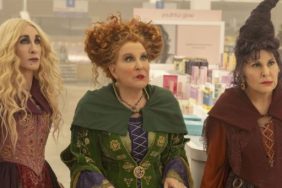
CraveOnline: You say you like this sort of genre. Were there any particular films or filmmakers that you felt were becoming an influence on The Voices, or did you strike out entirely on your own?
Marjane Satrapi: [Whether] I want to or not, I have some influences, but I try not to because what you call the “homage” is basically copying the work of [others]. I try not to make carbon copies of the other ones because it is not a good idea. Like the final revelry, the final scene, I made a storyboard and I showed it to my production designer, and he looked at me and he said, “Are you fucking kidding me? This is a scene in The Big Lebowski!” And I’m like, “Oh my God, yes! It is, it is!” I had just forgotten it and unconsciously [recreated it]. I love the scene with the bowling so much that of course I reproduced it, and of course I don’t want to make a bad version of the Coen Bros.’ Big Lebowski, because they’ve already done it.
So I have to find my own way to say what I have to say. But also what I liked about this film is it’s not told like any other film I have seen before. You know, nowadays you have Bonnie and Clyde in Norway, and this-and-this somewhere else. You have the same story going on and on and on. This felt like nothing that I really knew. Yeah, you can think about Psycho, but you don’t have him talking with his dog and cat. It does not have this fun side. It was very special for me to do that.
“We came in and we all smelled a shit smell…”
I think what I latched onto emotionally about this film is someone in this state of perpetual denial about themselves and what they’re doing. I loved the way that you visualized that in both states, in self-awareness and denial. I imagine that was extremely calculated. Can you tell me about the decisions you made?
Yes, because this is one of those rare movies where you are actually with the serial killer. You are not with the victims, you are in his head. You’re him. You follow him. So you have his life, you have his fantastic life and vision. So you have that, but in order to really be with Jerry, when you show the reality it should be like [the animals] say, “No Jerry, please don’t take those pills anymore. Let’s go back to this nice ideal apartment. We like it much more than what we just saw.” That was the thing for me.
Also, we decided he was in packing and shipping. He’s a psycho who is in packing and shipping. So what does he do? He packs. So when he cuts the body – these are the things that are not in the script, for example – when he cuts the body, how would he do it? He would do it in tupperware, in one color so it looks perfect. Because they always say, “Jerry from packing and shipping,” like he’s very proud of this packing and shipping stuff. But in the other version [of his reality], he’s also packing, but he doesn’t pack it in a nice, tidy way. He just packs.
[I based him] on an American-Bulgarian artist, his name is Christo. I hope that he doesn’t want to kill me because he’s the reference for the dirty house of Jerry. But you know, he packs everything. He rolls everything. He just rolls it and hangs it everywhere. But anyway, it has to be credible at the same time.
So cannot have this [mess all of the place] because if this shit is also in his bedroom, for example, he would stink when he goes to work, [and] nobody would talk to him. You have to find the right balance. So [he] washes himself. He doesn’t stink, so his bed cannot be dirty. [And] you know we put all this cat shit everywhere, but all of it was plastic, and when the set was ready and we came in and we all smelled a shit smell, but it didn’t smell like anything because it’s plastic. It looks so dirty that everyone who was there said it smelled so bad, [even though] it didn’t smell like anything.







